N891 simdata (CASA 3.4): Difference between revisions
From CASA Guides
Jump to navigationJump to search
No edit summary |
No edit summary |
||
| Line 6: | Line 6: | ||
* '''To create a script of the Python code on this page see [[Extracting scripts from these tutorials]].''' | * '''To create a script of the Python code on this page see [[Extracting scripts from these tutorials]].''' | ||
This tutorial simulates ALMA interferometric data for a nearby edge-on spiral galaxy. | |||
Roughly modeled after NGC891 | Roughly modeled after NGC891 | ||
==Data== | |||
For our model, we will use a data cube of 13CO from the [http://www.bu.edu/galacticring/ Galactic Ring Survey] on the 14-meter [http://www.astro.umass.edu/~fcrao/ FCRAO]. To speed the simulation, [ftp://ftp.cv.nrao.edu/NRAO-staff/rindebet/grs-12kms.fits this FITS file] contains the data we want binned to a coarser velocity resolution. | |||
==Simulation== | |||
<source lang="python"> | <source lang="python"> | ||
Revision as of 15:37, 12 June 2012
↵ Simulating Observations in CASA
- This is an advanced simulation tutorial. New users are recommended to begin with the Simulation Guide for New Users (CASA 3.4).
- This guide is applicable to CASA version 3.4. For older versions of CASA see N891 simdata2.
- To create a script of the Python code on this page see Extracting scripts from these tutorials.
This tutorial simulates ALMA interferometric data for a nearby edge-on spiral galaxy.
Roughly modeled after NGC891
Data
For our model, we will use a data cube of 13CO from the Galactic Ring Survey on the 14-meter FCRAO. To speed the simulation, this FITS file contains the data we want binned to a coarser velocity resolution.
Simulation
# In CASA
# Initializing simobserve
# Laying down some basic ground rules
default 'simobserve'
project = 'n891d'
skymodel = 'grs-12kms.fits'
- Units: K - first convert to flux surface brightness: Jy/Sr = 2x1023 k T / λ2, = 4x108T at 110GHz.
# In CASA
# Setting the new frequency of the central channel
incenter = '110.1777GHz'
- Now we need to decide if this model data will work at the desired pixel scale
- The GRS resolution of 40" at ~10kpc is 0.04" at 10Mpc, so we should be able to do a simulation of observing at ~0.1-0.2". The resolution plot (See Figure 1) indicates that for ALMA at 100GHz, configuration 20 is appropriate.
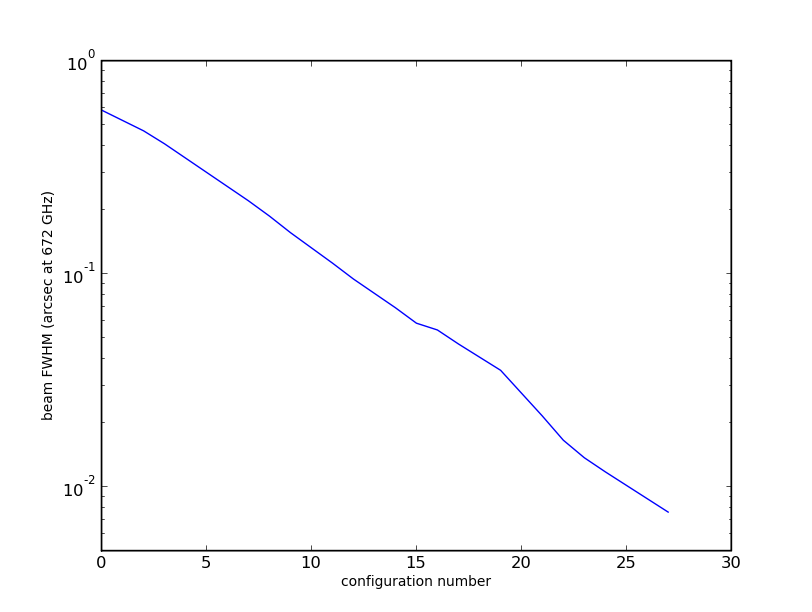
- If we intend to set incell=0.2arcsec in simobserve, then the cube needs to be multiplied by 4x108 * (.04/206265)2 = 1.4x10-5 to obtain Jy/pixel. The cube peaks at ~20K, so we can perform the simulation with inbright=3e-4, which should yield a peak of ~1mJy/bm.
- Will we be dominated by the noise in the input model? Input noise ~150mK or S/N~20, so at our scaled intensity, ~0.05 mJy/bm. The ALMA Sensitivity Calculator says that ALMA will achieve 2.5mJy/bm in 2 hours for the input 212m/s channel width (0.075MHz), so the noise in the input model should not affect our results.
# In CASA
# Setting the new channel width
inwidth = '0.075MHz'
- We do have a sensitivity issue though - if we decrease the spectral resolution by a factor of 6 (bin the input channels in some other program - simobserve will know how to do that in the future but not yet), and plan for 3 8-hr tracks, then the sensitivity calculator suggests that we'll get <0.25mJy rms, or S/N>10 per beam. Rather than simulate 3 days of observing, I'll increase inbright by sqrt(3) and simulate one 8 hour track.
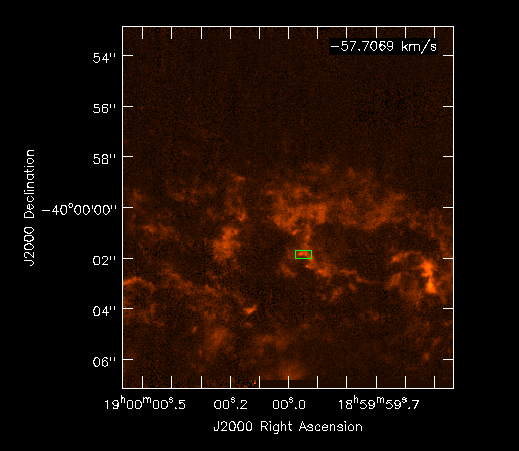
# In CASA
# Scaling the surface brightness
inbright = '1.4e-4'
- the ALMA 12m primary beam is 50" so we'd space a mosaic by 25", but the model cube has 326x357 pixels, or 13 arcsec with our small pixels. That's a lot smaller than the primary beam, so it doesn't matter much what output image size we ask for.
# In CASA
# Finish up the image model, and setting up the pointing
indirection = 'J2000 7h00m34 -23d03m00'
incell = '0.2arcsec'
setpointings = True
integration = '300s'
pointingspacing = '25arcsec'
mapsize = '60arcsec'
There are 659 channels in the input cube, but as noted above we want to bin those to 109 channels of 1.2 km/s each.
# In CASA
# Finish up the rest of the settings for this run of simobserve
graphics = 'both'
verbose = True
overwrite = True
obsmode = 'int'
antennalist = 'alma;0.5arcsec'
totaltime = '3600s'
simobserve() # Run simobserve to create the simulated data we need
default 'simanalyze'
project = 'n891d'
image=T
imsize = [336,360]
vis = project+'.alma_0.5arcsec.ms'
simanalyze() # All other default settings are OK in simanalyze
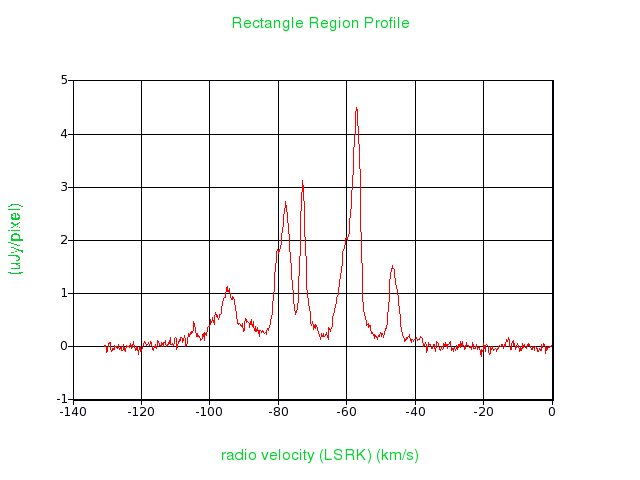
Figure 3: a spectral profile in the box marked in green
Input: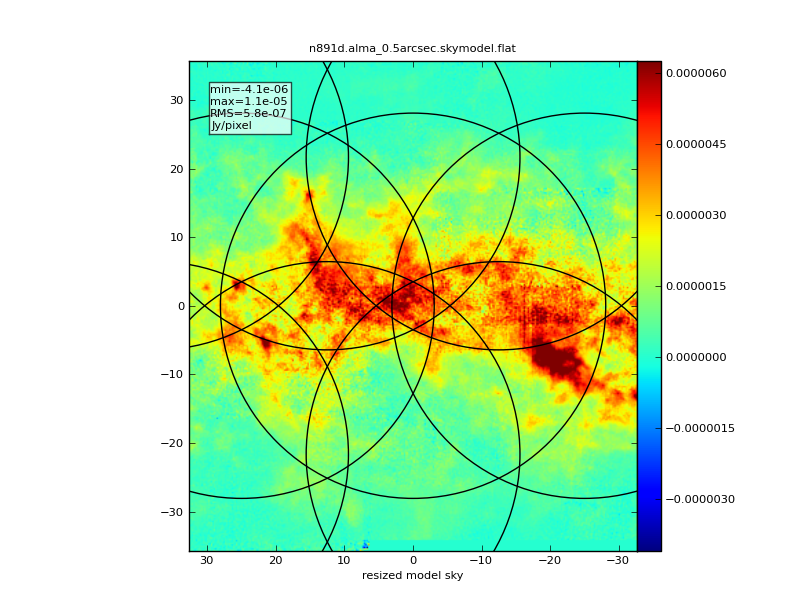
|
Predict:
|
Image: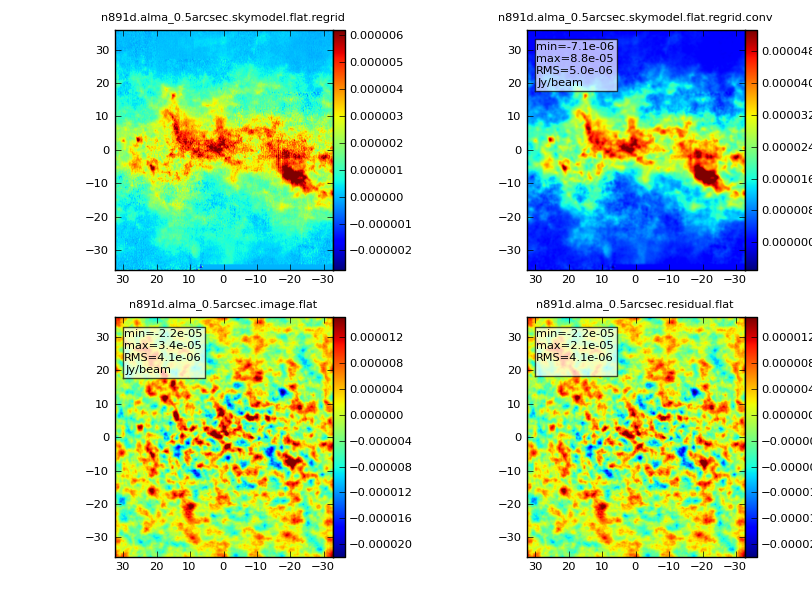
|
Analyze: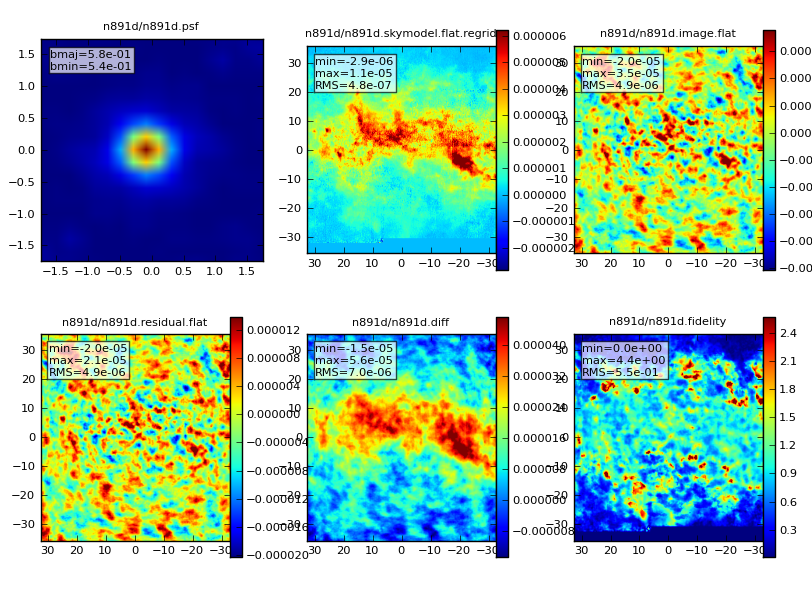
|
Figure 4: Sample results
Last checked on CASA Version 3.4.0.